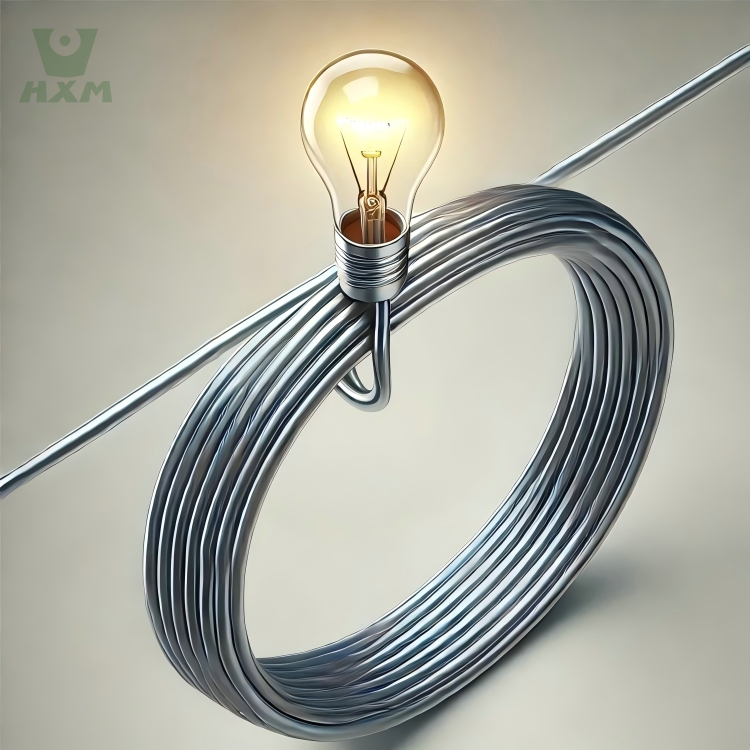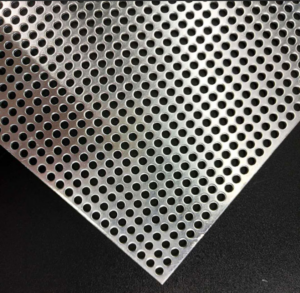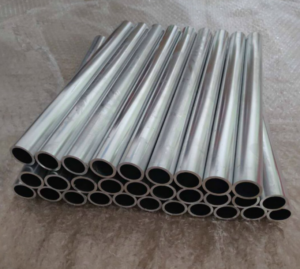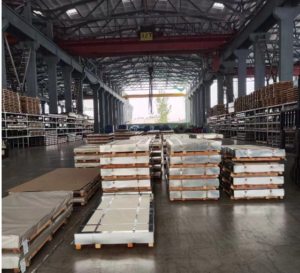
Does Stainless Steel Conduct Electricity?
Stainless steel is a material that surrounds us daily, from the appliances in our homes to the structures of modern cities. But have you ever wondered if it can conduct electricity? Let’s delve into the fascinating world of stainless steel and its electrical conductivity. Is it a conductor, an insulator, or something in between? Let’s find out.
Stainless steel conduct electricity
does stainless steel conduct electricity?
Yes, stainless steel can conduct electricity, but its electrical conductivity is relatively low compared to other metals like copper or aluminum. This is due to its unique composition, which includes iron, chromium, and other elements. While the chromium in stainless steel forms a passive oxide layer that enhances corrosion resistance, it also inhibits the flow of electrical current. However, stainless steel’s ability to conduct electricity makes it suitable for various applications, such as electrical enclosures and certain industrial equipment where both corrosion resistance and electrical conductivity are required.
In this blog, we will delve into the world of stainless steel to explore its electrical properties. We will uncover the factors influencing its conductivity, compare it with other common metals, and discuss scenarios where its unique combination of characteristics makes it an ideal choice. Now, let’s unravel the mysteries around stainless steel and electricity.
Stainless steel is indeed conductive, but its conductivity is not as high as that of other metals like copper or aluminum. Stainless steel contains iron, chromium, nickel, and other alloying elements, which affect its electrical conductivity. The presence of these alloying elements introduces resistance to the flow of electrons, reducing the material’s conductivity compared to pure metals.
However, stainless steel still conducts electricity to some extent due to the presence of free electrons within its structure. When a voltage is applied across a stainless steel conductor, these free electrons can move through the material, allowing electric current to flow. The conductivity of stainless steel can vary depending on its composition, temperature, and surface condition.
The chromium content in stainless steel forms a passive oxide layer on the surface, which helps protect the material from corrosion. This oxide layer acts as an insulator and can impede the flow of electrons to some extent, further reducing the material’s conductivity.
Despite its lower conductivity compared to other metals, stainless steel is still widely used in electrical applications where corrosion resistance and durability are essential. It is often employed in electrical enclosures, wiring, and components in harsh environments where exposure to moisture, chemicals, and extreme temperatures can compromise the performance of other materials.
In summary, stainless steel is conductive, but its conductivity is lower than that of pure metals due to the presence of alloying elements and the protective oxide layer on its surface. Nonetheless, stainless steel remains a valuable material in various electrical applications, offering a balance of conductivity, corrosion resistance, and mechanical strength.
see more : Is Stainless Steel Conductive?
Stainless steel conduct electricity
table of content
Stainless steel conduct electricity
Alloy composition of Stainless steel
Stainless steel, a material synonymous with durability and modern design, is a versatile alloy used in an array of applications. But beneath its attractive surface lies a complex and carefully crafted composition that gives it its unique properties. To understand stainless steel’s electrical conductivity, we must begin with its basic composition and the role each element plays. From chromium’s corrosion resistance to iron’s structural integrity, every component serves a purpose in this extraordinary alloy. In this section, we will explore the fundamental elements that make up stainless steel, setting the stage for a deeper understanding of stainless steel electrical conductivity.
Stainless steel, revered for its resistance to corrosion and impressive strength, is fundamentally an alloy composed primarily of iron, with a critical addition of chromium. In stainless steel, iron serves as the structural backbone, offering robustness and strength. Chromium is the key alloying element, typically making up at least 10.5% of the composition. This chromium content is pivotal, as it interacts with oxygen in the environment to form a protective layer of chromium oxide on the surface of the steel. This thin, transparent oxide layer acts as a shield, preventing further interaction between the steel and the surrounding elements, thus bestowing stainless steel with its remarkable resistance to rust and corrosion.
Additionally, stainless steel compositions may include other elements, such as nickel, molybdenum, or manganese, each contributing to specific properties, like enhanced durability or improved formability. Nickel, for example, can increase the material’s ductility and toughness.
While stainless steel’s composition might vary depending on the specific grade and application, understanding the core components, particularly the role of chromium, is crucial in comprehending its electrical conductivity. Now, let’s delve into how these components affect stainless steel’s ability to conduct electricity.
Stainless steel conduct electricity
the Role of Specific Elements in Electrical Conductivity
To comprehend the stainless steel electrical conductivity, it’s essential to explore the roles of specific alloying elements within its composition. While stainless steel is predominantly iron and chromium, the electrical properties are significantly influenced by several other elements, particularly nickel.
- Iron: As the primary component, iron lends strength to stainless steel but doesn't significantly contribute to electrical conductivity. Iron is a ferromagnetic material, meaning it has magnetic properties, but it has relatively poor electrical conductivity.
- Chromium:Chromium, the cornerstone of stainless steel's corrosion resistance, does not significantly impact its electrical conductivity. It primarily serves to form a passive oxide layer, isolating the metal from the external environment.
- Nickel:Nickel is a key element in specific stainless steel grades, like the austenitic 300 series. It plays a vital role in improving electrical conductivity by enhancing the metal's ductility. Nickel alloys in stainless steel have excellent electrical conductivity, making them suitable for various electrical and electronic applications.
- Molybdenum:Molybdenum is another alloying element that can be found in some stainless steel compositions. While it doesn't directly affect electrical conductivity, it contributes to the material's overall durability and corrosion resistance, which can be crucial in electrical applications in corrosive environments.
In summary, while iron and chromium are the primary components in stainless steel, it’s the presence of elements like nickel that significantly influences its electrical conductivity. Different stainless steel grades can exhibit varying electrical properties due to variations in alloy composition, making it a versatile material for applications requiring a balance of electrical performance and corrosion resistance.
Stainless steel conduct electricity
How the Alloy's Composition Affects Its Conductivity?
The electrical conductivity of stainless steel is profoundly influenced by the specific composition of its alloys. While stainless steel is primarily composed of iron and chromium, the presence of various alloying elements, as well as their proportions, plays a pivotal role in determining its electrical properties.
Nickel content is a critical factor influencing the electrical conductivity of stainless steel. Stainless steel grades with higher nickel content exhibit improved electrical conductivity, and this effect can be understood through its influence on the alloy’s microstructure and electron mobility.
Enhanced Electron Mobility: Nickel is a highly conductive metal. When nickel is introduced into the stainless steel alloy, it enhances the overall mobility of electrons within the material. Electrons are the charge carriers responsible for electrical conduction. In nickel-rich stainless steel grades, the presence of nickel allows electrons to move more freely through the material, resulting in increased electrical conductivity.
Austenitic Microstructure: Higher nickel content in stainless steel grades typically leads to an austenitic microstructure. The austenitic structure consists of a face-centered cubic lattice that facilitates the movement of electrons. This crystalline structure enables a more efficient flow of electrical charge through the material compared to other structures, such as the ferritic or martensitic microstructures.
Ductility and Electron Flow: Nickel’s addition also enhances the ductility of stainless steel. Ductility is the ability of a material to undergo plastic deformation without breaking. In stainless steel with higher nickel content, the increased ductility allows the material to be drawn into finer wires or other conductive forms, further improving its electrical conductivity.
Resistivity Reduction: Stainless steel with greater nickel content experiences a reduction in electrical resistivity. Resistivity measures a material’s opposition to the flow of electric current. The addition of nickel lowers the resistivity of stainless steel, making it a more effective conductor of electricity.
In summary, the electrical conductivity of stainless steel is significantly improved by higher nickel content due to its influence on electron mobility, crystalline structure, ductility, and resistivity. Stainless steel grades with elevated nickel percentages, such as the 300 series (e.g., 304 or 316), are preferred for applications where both corrosion resistance and electrical conductivity are required. These materials offer an optimal balance of properties, making them suitable for various electrical engineering and industrial applications.
The electrical conductivity of stainless steel is significantly influenced by its composition, particularly the presence of chromium and iron. These elements play vital roles in determining how well stainless steel conducts electricity.
Chromium’s Role:
- Passivation Layer Formation: Chromium is a key component of stainless steel as it provides excellent corrosion resistance. When stainless steel is exposed to oxygen, a thin, self-healing oxide layer, primarily composed of chromium oxide (Cr2O3), forms on the surface. This oxide layer is known as the passivation layer, and it acts as an insulator, reducing the direct contact of the metal with the surrounding environment. This passivation layer prevents further oxidation, which is beneficial for maintaining the material’s corrosion resistance but negatively affects its electrical conductivity.
Iron’s Influence:
- Ductility and Conductivity: Iron is the primary component in stainless steel, but its presence in relatively high amounts affects the material’s electrical conductivity. Stainless steel grades, particularly those with higher iron content, may have lower electrical conductivity due to the tendency of iron to contribute to resistivity.
In summary, the presence of chromium in stainless steel, while critical for corrosion resistance, can hinder its electrical conductivity by forming a passivation layer that acts as an insulator. On the other hand, iron, as the predominant component, may contribute to increased resistivity in stainless steel. These factors, along with the content of other alloying elements like nickel, molybdenum, and manganese, collectively determine the overall electrical conductivity of different stainless steel grades. In applications where electrical conductivity is a primary concern, selecting specific stainless steel grades with optimized compositions is essential.
Beyond chromium, iron, and nickel, stainless steel often contains various other alloying elements that can significantly impact its electrical conductivity. These elements are strategically added to enhance specific properties of the steel, and they play a role in determining the material’s conductivity.
Manganese:
- Manganese is added to stainless steel to improve its workability and mechanical properties. It has a limited effect on electrical conductivity, but its presence, even in small quantities, can contribute to higher resistivity.
Molybdenum:
- Molybdenum is used in certain stainless steel grades to enhance their resistance to corrosion, particularly in aggressive environments. It does not significantly influence electrical conductivity and is considered neutral in this regard.
Copper:
- In some specialty stainless steel grades, copper is added to improve both corrosion resistance and electrical conductivity. The addition of copper can boost the conductivity of stainless steel. These special alloys are often used in electrical and electronic applications where both properties are essential.
Sulfur and Phosphorus:
- These elements are generally considered impurities in stainless steel, and their presence is minimized as much as possible during steel production. They can increase resistivity and reduce electrical conductivity.
Carbon:
- While carbon is not typically added to stainless steel, it naturally occurs at low levels. Its effect on electrical conductivity is generally minimal. High-carbon stainless steels might exhibit slightly lower conductivity compared to low-carbon variants.
In summary, the electrical conductivity of stainless steel can be influenced by various alloying elements. The presence of manganese, sulfur, phosphorus, and even copper, along with the primary elements of chromium, iron, and nickel, collectively determines the overall electrical properties of stainless steel. Stainless steel alloys can be tailored to specific applications, allowing engineers and manufacturers to select the most suitable grade based on their unique requirements for both electrical conductivity and other properties.
The electrical conductivity of stainless steel is significantly influenced by its crystalline structure. Stainless steel alloys can have different microstructures, predominantly austenitic, ferritic, or martensitic, each with unique electrical properties:
Austenitic Stainless Steel:
- Austenitic stainless steel, characterized by its face-centered cubic (FCC) crystal structure, offers relatively low electrical conductivity. This is due to the ordered arrangement of atoms in its lattice, which hinders the movement of electrons. The presence of nickel, which is a common alloying element in austenitic stainless steel, further reduces electrical conductivity. While it excels in corrosion resistance, it is not typically chosen for applications where high conductivity is required.
Ferritic Stainless Steel:
- Ferritic stainless steel, with its body-centered cubic (BCC) crystal structure, has higher electrical conductivity compared to austenitic steel. The less ordered arrangement of atoms in the lattice allows for better electron movement. However, the presence of chromium, which is essential for corrosion resistance, still restricts high electrical conductivity. Ferritic stainless steel might be suitable for applications that require a balance between corrosion resistance and electrical conductivity.
Martensitic Stainless Steel:
- Martensitic stainless steel is known for its excellent strength and hardness. It can have a mixed BCC and FCC structure, and its electrical conductivity generally falls between austenitic and ferritic stainless steel. While it may offer somewhat better conductivity than austenitic steel, it is still not the ideal choice for applications where high electrical conductivity is crucial.
In summary, the crystalline structure of stainless steel plays a significant role in determining its electrical conductivity. The ordered structure of austenitic stainless steel results in lower conductivity, while the less ordered structures of ferritic and martensitic stainless steel can provide relatively better conductivity. However, the presence of alloying elements like nickel, chromium, and others, necessary for stainless steel’s primary properties such as corrosion resistance, still limits its electrical conductivity compared to pure metals. The choice of the appropriate stainless steel grade should consider the required balance between electrical properties and other critical performance factors.
In summary, the electrical conductivity of stainless steel is a complex interplay of various elements and their proportions within the alloy. The presence of nickel is the primary factor contributing to enhanced conductivity, making specific stainless steel grades ideal for various electrical applications where both corrosion resistance and electrical performance are essential. Different alloy compositions are chosen to suit different applications based on the desired balance of properties.
Stainless steel conduct electricity
What are the factors affecting the stainless steel electrical conductivity
As we delve into the realm of stainless steel’s electrical conductivity, it becomes clear that numerous factors come into play. Understanding these factors is crucial to grasp the intricate behavior of stainless steel when it comes to conducting electricity. In the following sections, we will explore the key elements that influence stainless steel’s electrical conductivity, shedding light on how alloy composition, surface condition, temperature, and the presence of impurities interplay in this complex relationship.
The impact of alloy type and composition
Stainless steel’s electrical conductivity is significantly influenced by its alloy type and composition. The alloy’s composition determines the concentration of different elements, such as chromium, nickel, and various alloying elements. The presence of alloying elements affects the electron mobility within the material, which, in turn, affects its conductivity.
For instance, in austenitic stainless steels like the popular 304 and 316 grades, the high nickel content enhances electrical conductivity due to nickel’s intrinsic conductive properties. On the other hand, ferritic and martensitic stainless steels contain less nickel and are generally less conductive.
The role of chromium, the primary alloying element in stainless steel, is multifaceted. While chromium contributes to the alloy’s corrosion resistance, it also hinders electrical conductivity due to its less conductive nature compared to other elements. Therefore, in high-chromium stainless steel grades, conductivity is generally lower.
The specific combination and concentration of alloying elements dictate the electrical conductivity of different stainless steel alloys. Understanding the impact of alloy type and composition is crucial when selecting the right stainless steel for applications that require electrical conductivity. It’s essential to work closely with stainless steel suppliers who can provide guidance on the most suitable alloy for your specific needs.
The role of surface condition and temperature
Stainless steel’s electrical conductivity is not solely determined by its composition; external factors like surface condition and temperature play a crucial role.
- Surface Condition: The surface condition of stainless steel can significantly affect its electrical conductivity. A smooth, polished surface reduces electrical resistance, allowing for better conductivity. However, rough or contaminated surfaces can hinder electron flow, thus reducing conductivity. Stainless steel suppliers can provide materials with specific surface treatments to match the desired conductivity requirements.
- Temperature: Temperature also plays a pivotal role. In general, electrical conductivity in stainless steel decreases with decreasing temperature. This phenomenon is in line with the behavior of most metals. As temperature drops, electrons experience more scattering due to increased lattice vibrations, impeding their movement and reducing conductivity. However, the impact of temperature on electrical conductivity can vary among different stainless steel grades.
Stainless steel suppliers often provide data on the electrical conductivity of their materials at different temperatures, allowing users to choose the most appropriate grade for specific temperature conditions. Understanding the effects of surface conditions and temperature is crucial when working with stainless steel in applications where electrical conductivity is a critical factor.
How impurities can influence conductivity?
Stainless steel’s electrical conductivity can be influenced by the presence of impurities, although stainless steel is generally known for its corrosion resistance and durability. Here’s a closer look at how impurities affect conductivity:
- Carbon Content: Stainless steel typically contains a small amount of carbon. While this is essential for its strength and other mechanical properties, high carbon content can reduce electrical conductivity. Carbon atoms can disrupt the orderly flow of electrons, increasing resistance and hindering conductivity. Stainless steel suppliers offer various grades with specific carbon content to meet different electrical conductivity requirements.
- Non-Metallic Inclusions: Impurities such as non-metallic inclusions, like oxides or sulfides, can be present in stainless steel due to the production process. These inclusions can create localized areas of higher resistance within the material, limiting its overall electrical conductivity. Suppliers often specify the purity levels of their stainless steel products to address this concern.
- Alloying Elements:While certain alloying elements are added intentionally to improve specific properties, an excess of some elements may negatively impact electrical conductivity. Molybdenum and silicon, for instance, can increase resistance when present in high concentrations.
To mitigate the influence of impurities on conductivity, stainless steel suppliers offer materials with precise alloy compositions and production techniques that minimize impurities. When selecting stainless steel for applications where electrical conductivity is critical, understanding the potential effects of impurities is essential to make the right choice.
Best Metal for Conducting Electricity
This ranking of electrical conductivity features both alloys and pure metals. Since conductivity is influenced by the size and shape of a material, this list assumes all samples are of identical size. Below is an ordered list of common metals and alloys, from the best to the least effective conductors of electricity:
- Copper
- Aluminum
- Stainless Steel
- Carbon Steel
- Nickel Alloys
- Brass and Bronze
Stainless steel conduct electricity
Stainless Steel vs. Other Metal Materials
Now that we have a solid understanding of how stainless steel’s electrical conductivity is influenced by its composition, let’s delve into a comparative analysis. We’ll examine how stainless steel stacks up against some common metal materials in terms of electrical conductivity. This will help us determine where stainless steel shines and where it might be outperformed by other metals in specific scenarios.
| Material | Electrical Conductivity | Typical Applications |
|---|---|---|
| Copper | Excellent | Electrical wiring, conductors, electrical components |
| Aluminum | Good | Electrical transmission lines, conductors, aerospace |
| Stainless Steel | Moderate to Low | Various industrial applications, especially when corrosion resistance is needed |
| Carbon Steel | Low | Structural and general industrial applications |
| Nickel Alloys | Good to Excellent | Chemical processing, aerospace, marine |
| Brass and Bronze | Good | Electrical connectors, decorative applications |
*This table provides a quick overview of the electrical conductivity of different materials and their typical applications.
In summary, while stainless steel generally falls behind copper, aluminum, and some other conductive metals in terms of electrical conductivity, its advantage lies in its excellent corrosion resistance. Stainless steel’s electrical conductivity can vary depending on its alloy composition, making it a versatile choice for applications that demand both corrosion resistance and moderate electrical conductivity. When considering which material to use, it’s crucial to weigh the specific requirements of your project.
Stainless steel conduct electricity
stainless steel in electrical industry
Stainless steel can be used in electrical wiring and circuitry, although it is not as commonly used as other metals like copper or aluminum. Stainless steel’s primary advantage in this application is its excellent corrosion resistance, which makes it suitable for environments where moisture, chemicals, or other corrosive substances are present.
Stainless steel wires and cables are used in specific applications where its properties are advantageous. For example, stainless steel wires are used in high-temperature environments or where resistance to abrasion and mechanical stress is required. Stainless steel’s ability to withstand extreme temperatures and its durability make it a suitable choice for certain electrical applications.
In circuitry, stainless steel is often used as a conductor or contact material in connectors and terminals. Its resistance to oxidation and its stable electrical properties make it reliable for signal transmission. However, due to its lower electrical conductivity compared to copper or aluminum, stainless steel is typically used in specialized applications where its other properties outweigh the need for high conductivity.
Stainless steel suppliers play a crucial role in providing the necessary stainless steel materials for electrical wiring and circuitry applications. They offer a range of stainless steel products, including wires, cables, connectors, and terminals, tailored to meet the specific requirements of the electrical industry. Stainless steel suppliers ensure the availability of high-quality stainless steel materials that comply with industry standards, enabling the efficient and reliable operation of electrical systems and devices.
Stainless steel conduct electricity
conclusion
In conclusion, we’ve delved into the fascinating world of stainless steel’s electrical conductivity. We’ve learned that while stainless steel may not be the best conductor when compared to metals like copper or aluminum, it holds a unique place in various industrial applications. Its remarkable resistance to corrosion makes it indispensable in scenarios where both electrical insulation and durability are crucial.
As engineers and designers, it’s essential to strike a balance between corrosion resistance and conductivity when selecting materials for specific applications. Stainless steel, with its versatility and adaptability, continues to play a vital role in industries where this balance is key. It’s a reminder that in the world of materials, there’s often more than meets the eye.
So, as you embark on your next project, consider the electrical properties of stainless steel. Its reliability and enduring strength might be just what you need to ensure long-lasting success.
For the finest stainless steel materials that suit your requirements, don’t hesitate to reach out to reputable stainless steel suppliers. They can provide expert guidance and the highest-quality stainless steel products for your unique applications.

Duplex Steel 2205 Coils: Understanding the Applications and Uses


Top 10 Applications of Perforated Metal in Architectural Projects

Guide to Stainless Steel Pipe Rolling: Process, Benefits, and Applications





